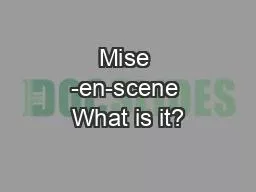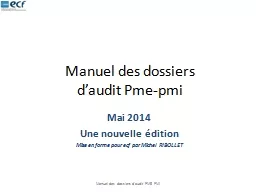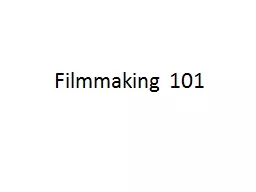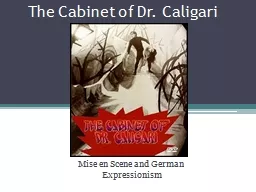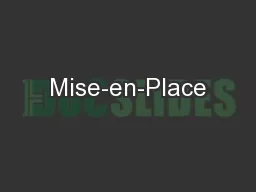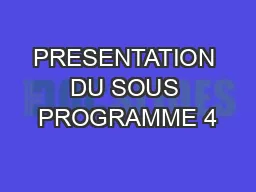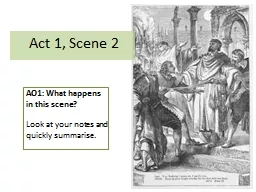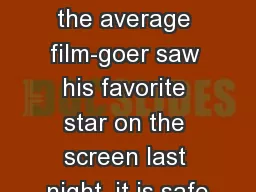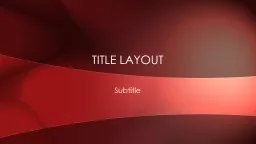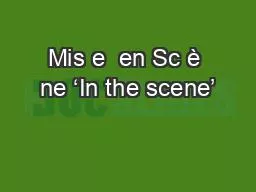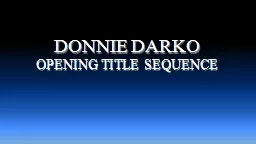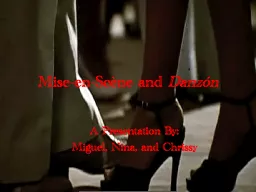PPT-Mise -en-scene What is it?
Author : widengillette | Published Date : 2020-10-06
MISE EN SCENE is a French Expression that means staging an action MISE EN SCENE in Cinema Studies refers to all the visual elements within the frame that and support
Presentation Embed Code
Download Presentation
Download Presentation The PPT/PDF document "Mise -en-scene What is it?" is the property of its rightful owner. Permission is granted to download and print the materials on this website for personal, non-commercial use only, and to display it on your personal computer provided you do not modify the materials and that you retain all copyright notices contained in the materials. By downloading content from our website, you accept the terms of this agreement.
Mise -en-scene What is it?: Transcript
Download Rules Of Document
"Mise -en-scene What is it?"The content belongs to its owner. You may download and print it for personal use, without modification, and keep all copyright notices. By downloading, you agree to these terms.
Related Documents

